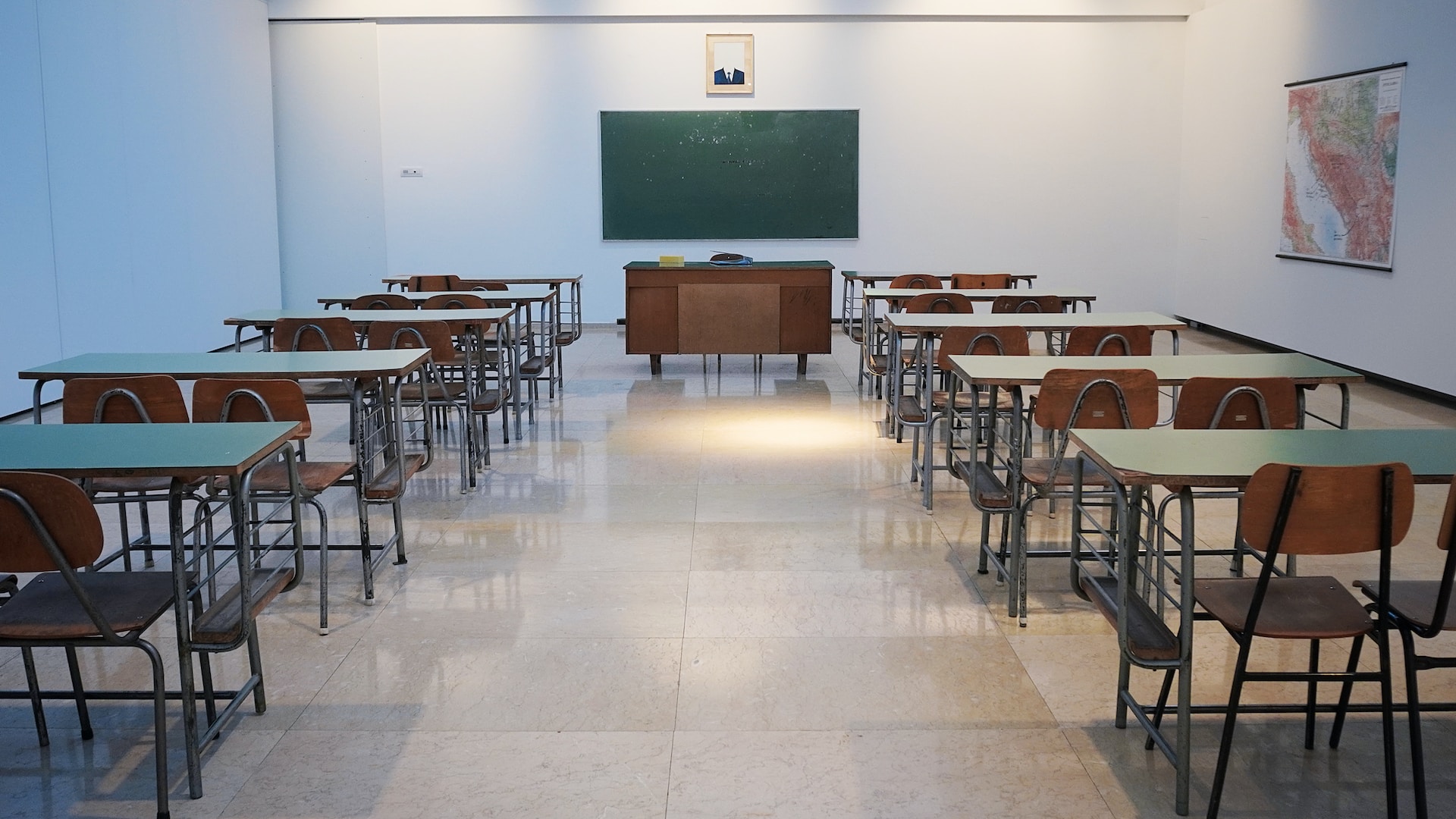A comic by Christopher Weyant, published on The Week, shows two school children walking from their elementary school to the bus that waits for them at the curb. One says to the other, “The good news about climate change is if we get enough heat days and snow days, we’ll never have to go to school!”
Though the comic plays on children’s perceived love of getting out of school, the idea of “heat days” reflects a sobering reality: The effects of human-accelerated climate change are creating a barrier for K-12 students to comfortably attend school all around North America, which can widen existing learning gaps.
While we continue burning fossil fuels, extreme weather patterns are expected to get worse. We believe that although no one person can do everything, everyone can do something. What can we do to make K-12 schools become more resilient to climate change?

Why do K-12 schools need to plan for extreme heat?
States around the U.S. are seeing record highs in September, from Texas, where the normally warm temperatures have grown unbearable, to northern states like Minnesota and Iowa, which typically get cooler at the end of summer.
Unusually hot weather can lead to heat stress, which is how the body reacts when it doesn’t have enough time to adjust. Prolonged heat stress is a health hazard and symptoms include sweating, discomfort, headaches, nosebleeds, and fainting.
Heat stress can also impact learning and productivity. For example, as the number of hot school days increases, students’ ability to learn sees a proportional decrease. But heat stress doesn’t just impact students — staff including classroom teachers and bus drivers will face medical issues that affect their work, too.
Many schools used funds from the American Rescue Plan to update air filtration infrastructure after the Covid-19 pandemic, but many still do not have air conditioning to compensate for extreme heat. In fact, the U.S. Government Accountability Office estimates that around one-third of schools need to update their HVAC systems. But the problem doesn’t just impact school buildings, it also extends to school buses without proper air conditioning.
Education experts worry that this situation will exacerbate educational inequality. Under-resourced schools are less likely to have the funds to update their HVAC systems, making it necessary to shorten school days or close schools entirely.

How are K-12 schools responding to extreme heat?
School administrators, whose attention is split between a variety of pressing issues — including staff retention, student learning gaps, and mental health — are responding as best they can under the circumstances.
This response looks different from state to state and district to district:
- Using the resources available to prepare learning environments. Schools outfitted with air conditioning can best keep students and staff cool for learning. A Chicago school with limited air conditioning rotates students through “cooling stations”. In schools in Washington, staff make water bottles available, turn off classroom lights, and use fans in lieu of air conditioning.
- Limiting outdoor activities during periods of high heat. In Connecticut, schools are canceling after-school activities and moving sports practice later in the day.
- Taking a new approach to “heat recess.” When it’s too hot for kids to learn, some schools are getting creative about recess; for example, by having gym class in air-conditioned classrooms or splitting recess into multiple parts.
- Reducing school hours. School districts in New Jersey and Philadelphia have introduced shorter days and early dismissals.
- Closing schools outright. In Ohio, many schools without adequate cooling systems have closed. Prolonged heat meant that some schools considered a return to virtual learning.
- Making a long-term plan. Some schools may plant trees and paint roofs white, which can help mitigate the effects of extreme heat.

The next step: responding to students’ climate anxiety
In even the best of situations, extreme weather disrupts children’s routines in addition to their education. They likely have an idea of what’s happening, even if they don’t understand it.
Studies show climate anxiety is on the rise in children of all ages, from elementary schoolers to teens, making environmental education more important than ever. (Climate anxiety is also on the rise among adults.) This can manifest in emotions from fear to sadness, anger, and feelings of powerlessness and guilt, and will vary from child to child.
A nationally representative EdWeek Research Center survey, conducted last fall, found that 37 percent of 14- to 18-year-olds feel anxious when they think about climate change and its effects, and more than a third feel afraid. Many also said they feel helpless and overwhelmed.
And a new study by the organization Earth Rangers, which works with children to transform their concerns about the environment into action, found that younger children are also experiencing some of these emotions. The group surveyed 1,000 6- to 11-year-olds in the United States and found that more than 80 percent of respondents indicated experiencing some degree of climate anxiety, including feeling worried about animal extinction, climate change, and the future of the planet. (Source: EdWeek)
Students deserve to understand what they’re facing, and to build tools to respond to it in a way that makes sense to them. How can educators, who may not have climate education themselves, help?
- Conversations about extreme weather and other topics related to climate change will take place whether we’re ready or not. An interview in EdWeek recommends that educators start by reckoning with their own feelings of anger, sadness, and powerlessness.
- Next, teachers can simply discuss relevant local news with students, whether that’s heat, hurricanes, or wildfires. This can help students to articulate, consider, and respond to their situation in a healthy way, especially where teachers are willing to share their own feelings and empathize. Administrators can stay in contact with teachers and parents while staying aware that children will react differently and may need additional resources, like counseling.
- Most importantly, educators can brainstorm class activities to help students work out their feelings and build a sense of agency in the face of something much larger than themselves. Such “action projects” can include surveying environmental issues around school, reducing food waste, starting a compost pile, planting bee-friendly plants, learning repair skills, upcycling recycled materials, and much more. See our blog on environmental education for ideas for each age group and school subject.

Doing our best in extreme situations
If you feel overwhelmed right now, that makes complete sense. Many K-12 schools are on new territory — and sometimes it helps to have a trusted partner in your corner.
Get support to fill staff vacancies so you can face new challenges with more wiggle room.